- Photo Safaris
- Alaska Bears & Puffins World's best Alaskan Coastal Brown Bear photo experience. Small group size, idyllic location, deluxe lodging, and Puffins!
- Participant Guestbook & Testimonials Candid Feedback from our participants over the years from our photo safaris, tours and workshops. We don't think there is any better way to evaluate a possible trip or workshop than to find out what others thought.
- Custom Photo Tours, Safaris and Personal Instruction Over the years we've found that many of our clients & friends want to participate in one of our trips but the dates we've scheduled just don't work for them or they'd like a customized trip for their family or friends.
- Myanmar (Burma) Photo Tour Myanmar (Burma) Photo Tour December 2017 -- with Angkor Wat option
- Reviews Go hands-on
- Camera Reviews Hands-on with our favorite cameras
- Lens reviews Lenses tested
- Photo Accessories Reviews Reviews of useful Photo and Camera Accessories of interest to our readers
- Useful Tools & Gadgets Handy tools and gadgets we've found useful or essential in our work and want to share with you.
- What's In My Camera Bag The gear David Cardinal shoots with in the field and recommends, including bags and tools, and why
- Articles About photography
- Getting Started Some photography basics
- Travel photography lesson 1: Learning your camera Top skills you should learn before heading off on a trip
- Choosing a Colorspace Picking the right colorspace is essential for a proper workflow. We walk you through your options.
- Understanding Dynamic Range Understanding Dynamic Range
- Landscape Photography Tips from Yosemite Landscape Photography, It's All About Contrast
- Introduction to Shooting Raw Introduction to Raw Files and Raw Conversion by Dave Ryan
- Using Curves by Mike Russell Using Curves
- Copyright Registration Made Easy Copyright Registration Made Easy
- Guide to Image Resizing A Photographers' Guide to Image Resizing
- CCD Cleaning by Moose Peterson CCD Cleaning by Moose Peterson
- Profiling Your Printer Profiling Your Printer
- White Balance by Moose Peterson White Balance -- Are You RGB Savvy by Moose Peterson
- Photo Tips and Techniques Quick tips and pro tricks and techniques to rapidly improve your photography
- News Photo industry and related news and reviews from around the Internet, including from dpreview and CNET
- Getting Started Some photography basics
- Resources On the web
- My Camera Bag--What I Shoot With and Why The photo gear, travel equipment, clothing, bags and accessories that I shoot with and use and why.
- Datacolor Experts Blog Color gurus, including our own David Cardinal
- Amazon Affiliate Purchases made through this link help support our site and cost you absolutely nothing. Give it a try!
- Forums User to user
- Think Tank Photo Bags Intelligently designed photo bags that I love & rely on!
- Rent Lenses & Cameras Borrowlenses does a great job of providing timely services at a great price.
- Travel Insurance With the high cost of trips and possibility of medical issues abroad trip insurance is a must for peace of mind for overseas trips in particular.
- Moose Peterson's Site There isn't much that Moose doesn't know about nature and wildlife photography. You can't learn from anyone better.
- Journeys Unforgettable Africa Journeys Unforgettable -- Awesome African safari organizers. Let them know we sent you!
- Agoda International discounted hotel booking through Agoda
- Cardinal Photo Products on Zazzle A fun selection of great gift products made from a few of our favorite images.
- David Tobie's Gallery Innovative & creative art from the guy who knows more about color than nearly anyone else
- Galleries Our favorite images
Fujifilm X-Pro2: Retro camera for those with Leica envy
Fujifilm X-Pro2: Retro camera for those with Leica envy
Submitted by David Cardinal on Mon, 01/23/2017 - 10:03
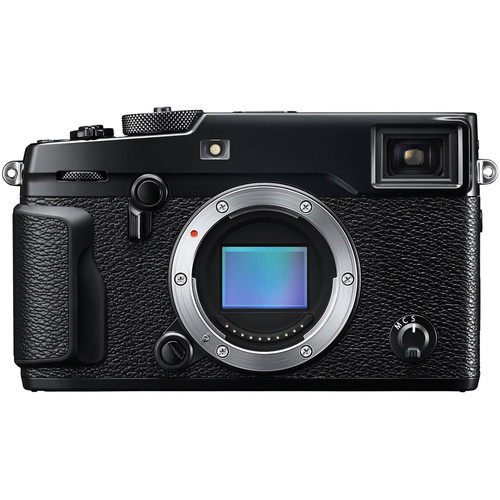 Right from the first look the Fujifilm X-Pro2 screams retro, and reminds one of a Leica. Its square-shaped, solid-metal, body, with large control dials on top is a definite throwback. At first blush, so is the Rangefinder (which under the hood turns out to be a lot more than that). As with Leica, a carefully-curated selection of high-performance lenses complement the camera itself. The design may be retro, and a few of the features, but the Fuji X-Pro 2 packs a punch when it comes to the latest technology, features, and premium image quality. You won't be sacrificing anything in those areas by moving to one.
Right from the first look the Fujifilm X-Pro2 screams retro, and reminds one of a Leica. Its square-shaped, solid-metal, body, with large control dials on top is a definite throwback. At first blush, so is the Rangefinder (which under the hood turns out to be a lot more than that). As with Leica, a carefully-curated selection of high-performance lenses complement the camera itself. The design may be retro, and a few of the features, but the Fuji X-Pro 2 packs a punch when it comes to the latest technology, features, and premium image quality. You won't be sacrificing anything in those areas by moving to one.
Film camera users will find familiar controls
If you haven't bought a new camera in this millennium, or are still shooting film, the controls on the Fujifilm X-Pro2 will be very familiar. One large dial on the top of the camera controls Shutter Speed and ISO "the old-fashioned way" (except here, of course, when you change the ISO it doesn't just change the metering, it really changes the effective ISO). Another large dial allows for easy adjustment of exposure compensation. Unfortunately, that dial is on the outside, and doesn't have a lock, so it is easy to move by accident.
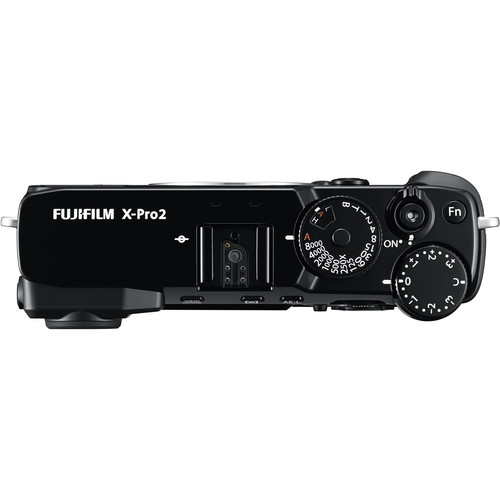 You can control Aperture either from the ring on the lens, or with a control dial (based on how you set a switch on the lens). The way you set the combination of Shutter Speed, ISO, and Aperture is also a bit of a throwback. To achieve the equivalent of "Program Mode" you set Shutter and ISO to Auto. Anyone looking for the now familiar A,S,M,P (or Av,Tv, M, and P) modes will have to relearn how to control their camera. Personally, I really like the dedicated “Drive” button on the back, that allows rapid switching between single, burst, and bracketing modes, among others. Another nice touch is the addition of a small joystick for selecting AF points. Seals have also been upgraded from the original version. The “Q” button also offers a great set of commonly used shooting settings for quick access.
You can control Aperture either from the ring on the lens, or with a control dial (based on how you set a switch on the lens). The way you set the combination of Shutter Speed, ISO, and Aperture is also a bit of a throwback. To achieve the equivalent of "Program Mode" you set Shutter and ISO to Auto. Anyone looking for the now familiar A,S,M,P (or Av,Tv, M, and P) modes will have to relearn how to control their camera. Personally, I really like the dedicated “Drive” button on the back, that allows rapid switching between single, burst, and bracketing modes, among others. Another nice touch is the addition of a small joystick for selecting AF points. Seals have also been upgraded from the original version. The “Q” button also offers a great set of commonly used shooting settings for quick access.
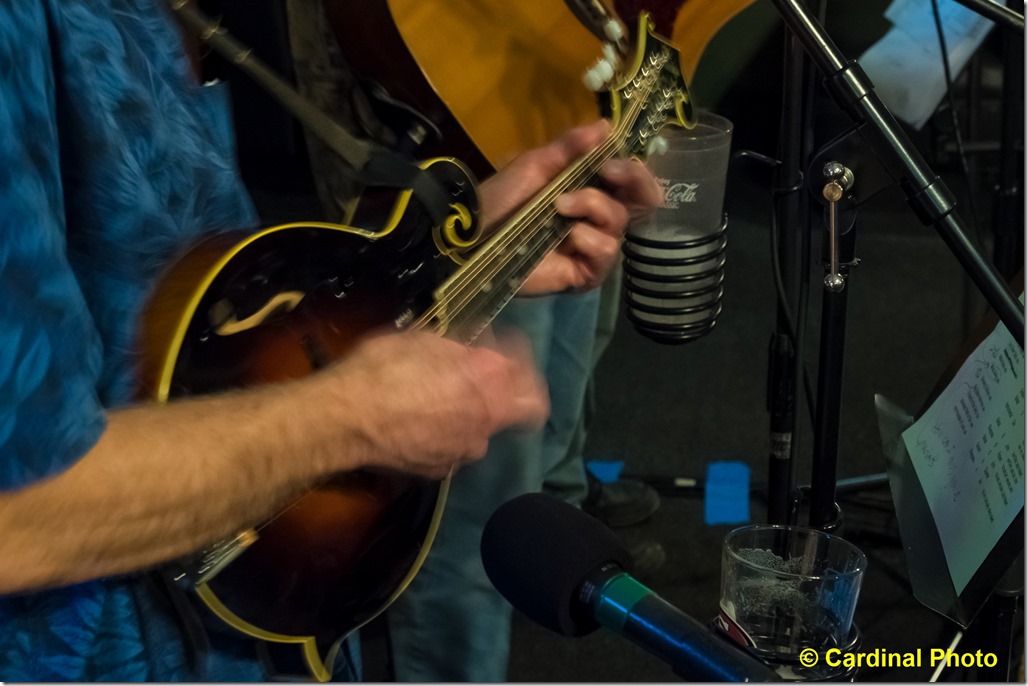
I like the retro dials on the X-Pro2, but they don’t make it easy to fiddle with settings when you’re close up like I was for this shot.
Fujifilm X-Pro2, 1/9s @ f/6, –2/3 e.v., ISO 6400
Plenty of features under the hood
Starting with 273 AF points (including 169 phase detect) and a 1/8000s maximum shutter speed, the Fujifilm X-Pro2 packs in lots of tech. ISO Range has been bumped up from the earlier version, to 200-12,800, and an additional 2 stops available in Expanded mode. Flash sync is available up to a very reasonable 1/250s. The hybrid viewfinder is one of the most unique features of the camera. In “Rangefinder” mode, you see directly through the finder, but the system can add shooting aids include AF points and a rectangle indicating the actual image frame when using a Zoom or Telephoto lens. With the flip of a simple (retro-shaped) switch located near your shutter finger, it turns into a fully-featured 2.36MP EVF. As a result, you get one of the most flexible viewing systems available in any mirrorless camera.
It’s primary sensor is an updated 24MP X-Trans type. For those not familiar with X-Trans, its non-traditional (e.g. not Bayer) pixel arrangement makes it less susceptible to some types of artifacts like aliasing. Unfortunately, that also means raw processors need to do additional work to support the camera, and that it doesn’t have a DxOMark score for easy image quality comparison to other models. Its large memory buffer and fast processor allow it to rip off 83 JPEGs or 33 RAW images at up to 8 fps before it starts to hiccup. The camera also does a competent job with video, supporting 1080p at 60 fps.
Image quality is as good as it gets without going full frame
The combination of the X-Trans sensor and Fujifilm’s carefully-paired lenses results in excellent image quality. In this wide-angle shot with the Fujifilm 18-135mm zoom, for example, you can see there is virtually no distortion:
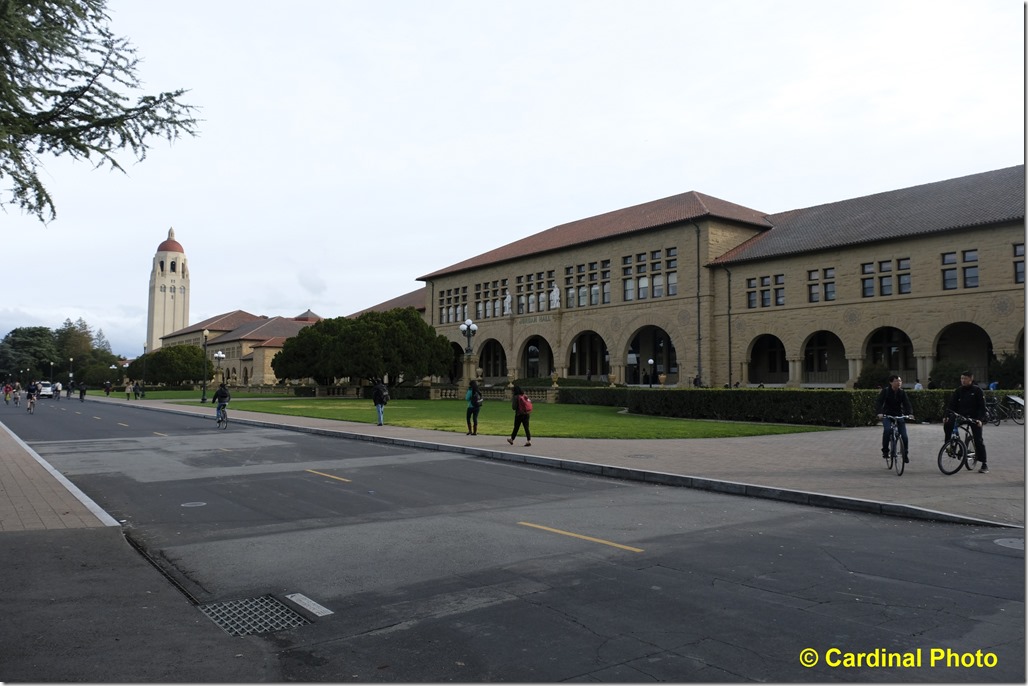
Front of the Quad at Stanford University
Fujifilm X-Pro2, f/7.1 @ 1/709s, ISO 800, 18-135mm lens @ 18mm
Low-light indoor images also looked great, with good dynamic range:
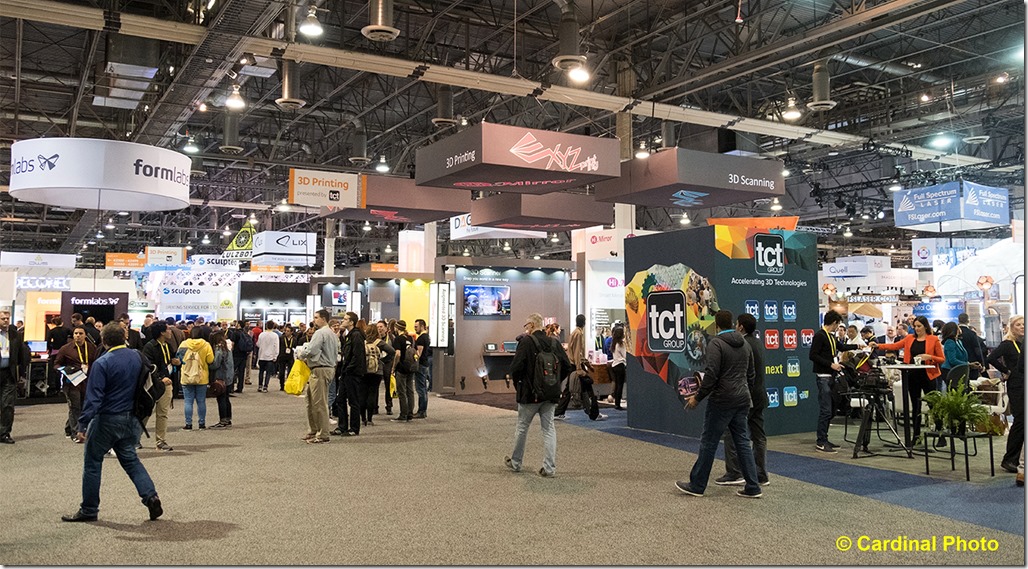
The 3D printing showcase at CES 2017
Fujifilm X-Pro2, f/3.6 @ 1/170s, –2/3 e.v., ISO 2500, 18-135mm lens @ 19mm
Film effects for JPEG shooters
Most of us who enjoy experimenting with film looks have moved to shooting RAW and doing it in post processing with tools like the excellent FilmPack from DxO. But if you really want to do it the old-fashioned, in-the-camera, way, the Fujifilm X-Pro2 offers a selection of film looks from a variety of classic Fujifilm stocks.
Fujifilm X-Pro2 versus the Fujifilm X-T2 or the new Fujifilm X-T20
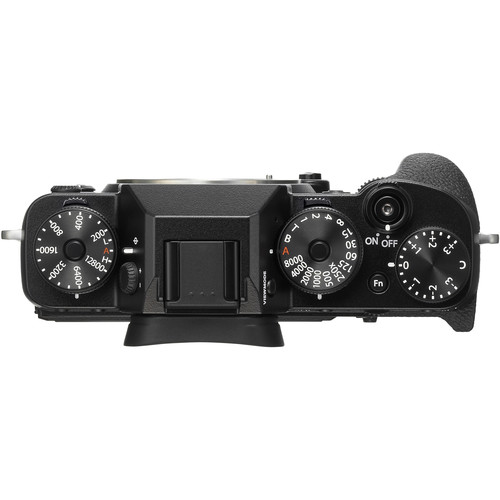 If you want some classic styling, but don’t really want to relive the glory of your film years, the more-contemporary Fujifilm X-T2 may be a better option for you. It is about the same price (when you can find them in stock), but adds some user-friendly features like a tilting LCD. The EVF doesn’t include the Rangefinder mode – but most photographers have gotten out of the habit of using one anyway. It puts Shutter Speed and ISO on two separate dials, which makes them a little easier to use (and the text on the dials easier to read).
If you want some classic styling, but don’t really want to relive the glory of your film years, the more-contemporary Fujifilm X-T2 may be a better option for you. It is about the same price (when you can find them in stock), but adds some user-friendly features like a tilting LCD. The EVF doesn’t include the Rangefinder mode – but most photographers have gotten out of the habit of using one anyway. It puts Shutter Speed and ISO on two separate dials, which makes them a little easier to use (and the text on the dials easier to read).
You can also see from its control layout on the left that the exposure compensation dial is a little more inset, so it isn’t as likely to get bumped by accident. Interestingly, the X-T2 is actually 2 ounces heavier than the X-T2. Not a big deal, but from handling both, the X-Pro2 felt heavier to me – perhaps because of its very classic metal build.
If you love the idea of an X-sensor camera, and don’t need weather sealing or all the latest features, the Fujifilm X-T20 will give you the same image quality at about half the price. Selling for $900 for body only, or $1,200 with an 18-55mm lens. It isn’t shipping yet, but you can pre-order one at B&H.
Lenses
I shot the X-Pro2 with 2 lenses, the Fujifilm XF 35mm f/2 R WR prime lens, and the Fujifilm 18-135mm f/3.5-f/5.6 lens, with OIS. Like all the Fujifilm X-series lenses, they have been designed from the ground up to work well with the X-mount and X-sensor. The result was clear in the high-quality, low-distortion, images I got from both. Street photographers will enjoy the small size of the 35mm prime, while I found the zoom to be more practical for the variety of shooting I was doing over the course of a day, and the OIS was very helpful when doing product shots in the low light at many CES booths, and for helping me get more depth-of-field in landscapes captured near dawn or dusk without a tripod.
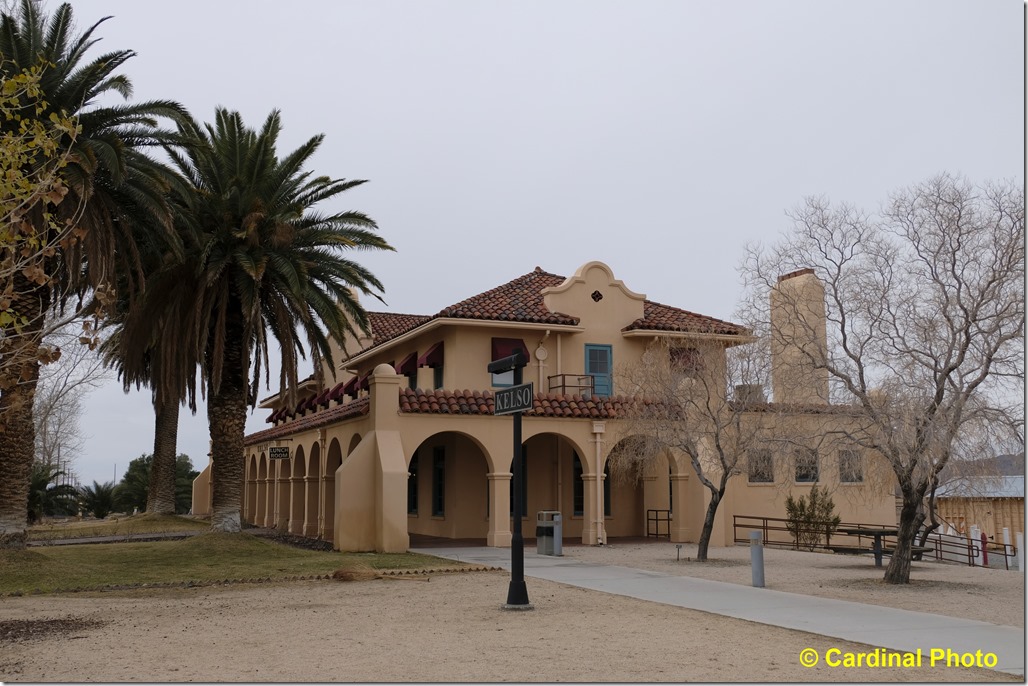
It is really hard to find a reason to complain about images from the X-Pro2.
This out-of-the-camera JPEG correctly conveys the dull sky, while providing plenty of detail in the shadows.
There is also little distortion shown.
Fujifilm X-Pro2, 1/400s @ f/7.1, ISO 200, Fuji 18-135mm @ 24mm
Key Features
- 24.3MP APS-C X-Trans CMOS III Sensor
- X-Processor Pro Engine
- Advanced Hybrid Multi Viewfinder
- 3.0" 1.62m-Dot LCD Monitor
- Full HD 1080p Video Recording at 60 fps
- Built-In Wi-Fi, SHARE Printer Compatible
- 273-Point AF with 77 Phase-Detect Points
- Up to 8 fps Shooting and ISO 51200
- Weather-Sealed Design, 2x SD Card Slots
- Film Simulation and Grain Effect Modes
Full Specs
Lens Mount
Fujifilm X Mount
Camera Format
APS-C (1.5x Crop Factor)
Pixels
24.3 Megapixel
Max Resolution
6000 x 4000
Aspect Ratio
3:2
Sensor Type / Size
CMOS, 23.6 x 15.6 mm
File Formats
Still Images: JPEG, RAW
Movies: MOV, MPEG-4 AVC/H.264
Audio: Linear PCM (Stereo)
Bit Depth
14-bit
Dust Reduction System
Yes
Memory Card Type
SD
SDHC
SDXC
Video Recording
Yes, NTSC/PAL
Resolution
1920 x 1080: 60 fps, 50 fps, 30 fps, 25 fps, 24 fps
1280 x 720: 60 fps, 50 fps, 30 fps, 25 fps, 24 fps
Video Format
High Definition
1920 x 1080p / 60 fps (36 Mbps)
Aspect Ratio
16:9
Video Clip Length
Up to 28 Min
Audio Recording
Built-in Mic: With Video, Stereo
Optional External Mic: With Video, Stereo
Focus Type
Auto & Manual
Focus Mode
Continuous-servo AF (C), Manual Focus (M), Single-servo AF (S)
Autofocus Points
Phase Detection:77
Contrast Detection:196
Viewfinder Type
Optical, Electronic
Viewfinder Size
0.48"
Viewfinder Pixel Count
2,360,000
Viewfinder Eye Point
16.00 mm
Viewfinder Coverage
100%
Viewfinder Magnification
Approx. 0.59x
Diopter Adjustment
- 4 to +2 m
Display Screen
3" Rear Screen LCD (1,620,000)
Screen Coverage
100%
ISO Sensitivity
Auto, 200-12800 (Extended Mode: 100-51200)
Shutter
Type: Mechanical
Speed: 30 - 1/8000 second, Time Mode
Type: Mechanical
Speed: 4 - 1/8000 second in Program Mode
Type: Mechanical
Speed: 0 - 60 minutes in Bulb Mode
Type: Electronic
Speed: 1 - 1/32000 second
Type: Electronic
Speed: 1 second in Bulb Mode
Type: Electronic & Mechanical
Speed: 30 - 1/32000 second
Type: Electronic & Mechanical
Speed: 4 - 1/32000 second in Program Mode
Type: Electronic & Mechanical
Speed: 60 - 0 minutes in Bulb Mode
Remote Control
RR-90 (Optional)
Metering Method
Average metering, Center-weighted average metering, Multi-zone metering, Spot metering
Exposure Modes
Modes: Aperture Priority, Manual, Program, Shutter Priority
Compensation: -5 EV to +5 EV (in 1/3 EV steps)
White Balance Modes
Automatic Scene Recognition, Color Temperature, Custom, Fine, Fluorescent (Cool White), Fluorescent (Daylight), Fluorescent (Warm White), Incandescent, Shade, Underwater
Continuous Shooting
Up to 8 fps at 24.3 MP for up to 83 frames in JPEG format
Up to 8 fps at 24.3 MP for up to 33 frames in raw format
Flash Modes
Auto
Auto/Red-eye Reduction
Commander
Forced On
Forced On/Red-eye Reduction
Rear Curtain Sync/Red-eye Reduction
Rear Sync
Slow Sync/Red-eye Reduction
Suppressed Flash
Built-in Flash
No
Max Sync Speed
Mechanical Shutter: 1 / 250 seconds
External Flash Connection
Hot Shoe
Start-up Time
0.4 seconds
Shutter Lag
0.05 seconds
Self Timer
10 seconds, 2 seconds
Interval Recording
Yes
Connectivity
2.5mm Sub-mini (2-Ring), HDMI D (Micro), Micro-USB, USB 2.0
Wi-Fi Capable
Yes
Battery
1x NP-W126 Rechargeable Lithium-ion Battery Pack, 7.2 VDC, 1260 mAh
AC Power Adapter
AC-9V (Optional)
Operating/Storage Temperature
Operating
32 to 104°F (0 to 40°C)
Humidity: 10 - 80%
Dimensions (WxHxD)
5.5 x 3.3 x 1.8" / 140.5 x 82.8 x 45.9 mm
Weight
15.70 oz / 445 g body only
Package Weight
2.8 lb
Box Dimensions (LxWxH)
8.2 x 5.7 x 5.5"
- Log in to post comments

